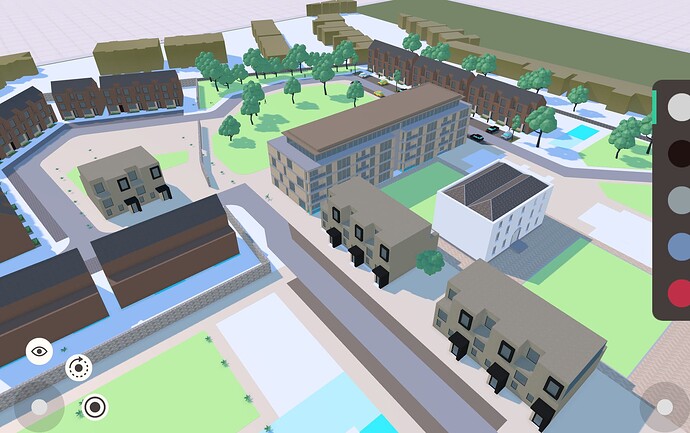Hi Johan, thanks for coming back to me on this. I’ve experimented a bit more and have produced a more controlled set of images as posted above by:
- creating a clearer context for the AI to understand via Setchup
- keeping the architectural language of my Arkio model simple [ie windows, characters, trees, cars etc as basic scale prompts]
- refining the word prompts for the image production [ie modern apartments trees in foreground at night street view… etc]
With regard to sketchup placement, I’ve played around with it some more and the origin doesnt matter as much as for example an image file pinned to table, because the cloud file automatically updates the model when its re-exported from Sketchup.
The opposite is true of image file placement - this had been my previous workflow with Arkio using sketches produced in TracePro on Ipad [or CAD drawings as PNG files] and brought into the Arkio table as a base for a volumetric model. With that set-up I would need to start a new Arkio project with each iteration to make sure the scale was consistent. However, with the cloud import on SKP, this process is automatic, so the ‘pin at origin’ option is moot.
One thing that could make life easier would be the ‘snap’ availability of the imported skp model. When I place my SKP model on the table , it would be great to have an option to:
- lock it in position and
- make it ‘snappable’
As mentioned above, to get a better handle on the AI output with magic camera, the environmental prompts can heavily steer the generated images. It would stream line the whole process toward image generation if the imported model [ie the environmental context generated in outside software eg SKP] could be snapped to with haptic feed back on its ground planes so that models created within Arkio can be placed directly on its surface. On the above generated images, I was not getting haptic feedback on model placement so some buildings are sitting below the visible ground plane [an environmental element brought in from SKP].
Final notes, and these relate more to the commercial release rather than the beta [from where I was modelling]:
When I used too many of the ‘building’ components within the Arkio library on an apartment building, things went a little awry. I tried to group and copy the building I had created in session and suddenly all my in session geometries disappeared! I am certain this is not a PC hardware issue but may be related to the headset or software. [Running session on Quest 3 via Link Cable on a high powered PC]. I was able to recover things by going into ‘flat mode’ on PC and opening a history file or re-opening the base file. However, the issue would repeat each time I tried to copy or group too much f my generated models within the VR session. Maybe this is a ‘me’ thing but thought it might be worth flagging !
Second, I noticed from SKP import that I had to switch off certain components [ie railings] to make the session workable. When I had railings on [imported randomly rom 3D warehouse] the 3D session was jittery and it took a few minutes to export from SKP to Arkio. As soon as it turned off the layer in sketchup with the railings, the export took one second and the VR session was smooth.
I’ll revert with other findings as I go. The above images shared are from an ongoing design process they are both 'beta tested and a useful part of my current workflow! G









